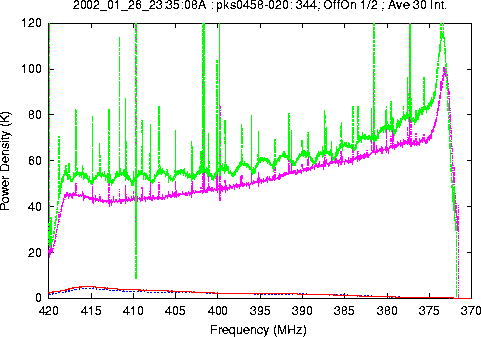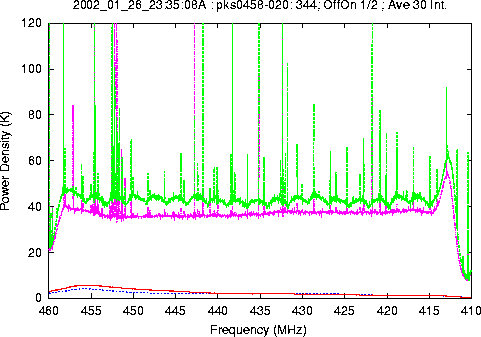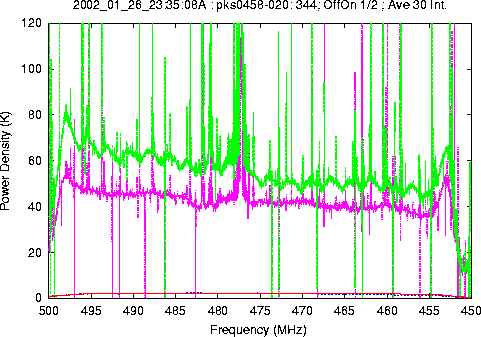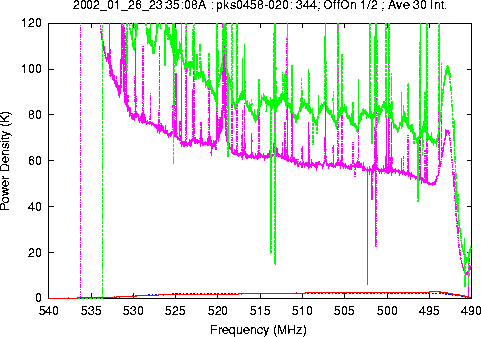|
|
On 2002 January 26, observations were made of the
RFI environment in the 380 to 520 MHz Band, using the GBT PF1 receiver
and the spectrometer.
The plots below show the system temperature, assuming a constant
cal noise diode temperature of 2 K.
Each plot shows 4 spectra; the two spectral graphs show the
dual linear polarization
intensities in Kelvins. The two lower spectra show the variation in
the cal noise diode and system gain product.
The spectra were produced by averaging 60 seconds of OFF-source data,
organized in 2 second integrations. The spectral bandwidth is 50 MHz,
and there are 8192 spectral channels.
There is significant RFI in this frequency range. The lower frequency end
seems better. The brightest features in the higher frequency range
have effective brightnesses greater than 40,000 K.

| pks0458-020: 344; OffOn 1/2 Samplers 1,5 of 8, Ave of 30 Int. Ascii Data (2002_01_26_23:35:08A.0.log) |

| pks0458-020: 344; OffOn 1/2 Samplers 2,6 of 8, Ave of 30 Int. Ascii Data (2002_01_26_23:35:08A.1.log) |

| pks0458-020: 344; OffOn 1/2 Samplers 3,7 of 8, Ave of 30 Int. Ascii Data (2002_01_26_23:35:08A.2.log) |

| pks0458-020: 344; OffOn 1/2 Samplers 4,8 of 8, Ave of 30 Int. Ascii Data (2002_01_26_23:35:08A.3.log) |
last modified on: 2002JAN27